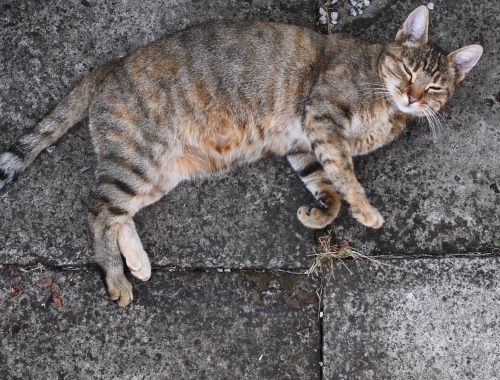
The Mysterious World of Feline Purring: Why and How Cats Purr
Cats, those mysterious and captivating creatures, have a unique ability that has fascinated humans for centuries: they can purr. The soothing sound of a cat’s purr is not only a source of comfort but also a subject of scientific intrigue. In this article, we’ll delve into the enigmatic world of feline purring, exploring why cats purr and how they produce this intriguing sound.
The Purpose of Purring: Why Cats Purr
The exact reasons behind why cats purr are still a subject of ongoing research and debate among scientists and veterinarians. Cats are known to purr in various situations, and it serves a multitude of purposes:
1. Contentment and Comfort:
- One of the most common reasons cats purr is to express contentment and relaxation. Cats often purr when they’re in a comfortable and secure environment, such as when they’re curled up on your lap or basking in the sun.
2. Communication:
- Cats use purring to communicate with their owners and other cats. Mother cats purr to soothe and bond with their kittens. Domestic cats may purr to signal their presence and request attention or food.
3. Self-Healing and Stress Reduction:
- Purring has been linked to self-healing properties in cats. The vibrations generated by purring may help heal bones, reduce pain and inflammation, and promote tissue regeneration. Cats may also purr when they’re stressed or anxious as a way to self-soothe.
4. Hunger and Discomfort:
- Cats may purr when they’re hungry or unwell. This is a form of communication, signaling their needs to their owners. It’s essential to pay attention to other cues, such as body language and vocalizations, to understand the context.
5. Bonding and Social Interaction:
- Cats often purr during social interactions with their human companions. This reinforces the bond between cats and their owners.
6. Calming Effects:
- The sound of a cat’s purr can have a calming effect on both cats and humans. It’s not uncommon for people to find solace in the soothing sound of a purring cat.
How Cats Purr: The Mechanics of Purring
Understanding how cats produce that distinctive purring sound involves exploring the intricate mechanics within a cat’s body:
1. The Laryngeal Muscles:
- Cats have a specialized set of laryngeal muscles (located in the voice box or larynx) that allow them to produce the rapid vibrations characteristic of purring. These muscles contract rhythmically, causing the vocal cords to open and close rapidly, creating the purring sound.
2. The Purrrfect Frequency:
- A cat’s purr typically falls within the range of 25 to 150 Hertz (Hz). Interestingly, this frequency range is believed to have therapeutic effects, promoting healing and reducing pain and stress.
3. Continuous and Voluntary:
- Unlike other vocalizations, such as meowing, purring is continuous and voluntary. Cats can start and stop purring at will. Some cats are prolific purrers, while others are more reserved.
4. The Cat’s “Throttle”:
- Think of a cat’s purring mechanism as a kind of “throttle.” Cats can adjust the intensity and frequency of their purring to suit the situation. For example, they may purr softly when relaxed and more vigorously when in discomfort.
5. The Mystery of Mechanism:
- While the basic mechanics of purring are understood, some aspects remain mysterious. Researchers are still exploring precisely how cats control their unique purring apparatus and why it doesn’t interfere with their ability to produce other vocalizations.
When to Pay Attention: Understanding Cat Purring
While cat purring is often associated with contentment and relaxation, it’s important for cat owners to pay attention to the context and accompanying behaviors. Sometimes, excessive or unusual purring can be a sign of underlying health issues or discomfort. If your cat’s purring is accompanied by signs of distress, changes in behavior, or other concerning symptoms, consult with a veterinarian to rule out any medical problems.
Frequently Asked Questions (FAQ) About Cat Purring
Cats are known for their unique ability to purr, and people often have questions about this fascinating behavior. Here are some frequently asked questions about cat purring:
1. Why do cats purr?
- Cats purr for various reasons, including contentment, relaxation, communication, self-healing, stress reduction, and bonding with their owners.
2. How do cats produce the purring sound?
- Cats produce the purring sound by contracting specialized laryngeal muscles in their voice box (larynx), causing rapid vibrations of their vocal cords. These vibrations create the purring sound.
3. Is purring only associated with happiness?
- No, cats can purr for various reasons, not just when they are happy. They may purr when they are in pain, unwell, anxious, or hungry. Understanding the context and accompanying behaviors is essential to interpret a cat’s purring accurately.
4. Can cats purr when they are asleep?
- Yes, cats can purr while they are asleep. Purring is a voluntary action, and cats can choose to purr whether they are awake or asleep.
5. Is the frequency of a cat’s purring significant?
- The frequency of a cat’s purring typically falls within the range of 25 to 150 Hertz (Hz). This frequency range is believed to have therapeutic effects, such as promoting healing and reducing pain and stress.
6. Are all cats capable of purring?
- Most domestic cats are capable of purring. However, some wild cat species, such as lions and cheetahs, cannot purr in the same way domestic cats do. They have different laryngeal structures.
7. Can cats purr and meow at the same time?
- Cats can purr and meow separately, but they typically do not do both simultaneously. Purring and meowing serve different communication purposes.
8. What should I do if my cat’s purring seems unusual or excessive?
- If your cat’s purring is unusual, excessive, or accompanied by signs of distress, changes in behavior, or other concerning symptoms, it’s essential to consult with a veterinarian. Unusual purring can sometimes indicate underlying health issues.
9. Is there a limit to how long a cat can purr continuously?
- Cats can purr for extended periods, and the duration may vary from cat to cat. Some cats are prolific purrers and can purr for extended periods when they are comfortable and relaxed.
10. Can humans hear all types of cat purring?
- Understanding why and how cats purr can deepen your connection with these beloved pets. While purring is often associated with contentment, remember that cats use it as a form of communication and self-soothing in various situations. Paying attention to your cat’s purring and accompanying cues can help you respond to their needs and emotions effectively.
Conclusion
In conclusion, the world of feline purring is a captivating blend of science, communication, and companionship. Cats purr for a variety of reasons and understanding these purposes can deepen the bond between humans and their feline friends. The ability to produce this enigmatic sound lies in the specialized mechanics of a cat’s laryngeal muscles, which have evolved to serve various functions, from healing to communication. So, the next time your cat curls up in your lap and starts to purr, take a moment to appreciate the intriguing mystery and comfort that is the feline purr.












Leave a Reply